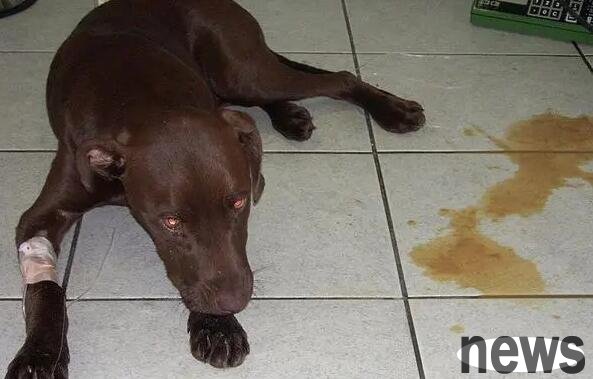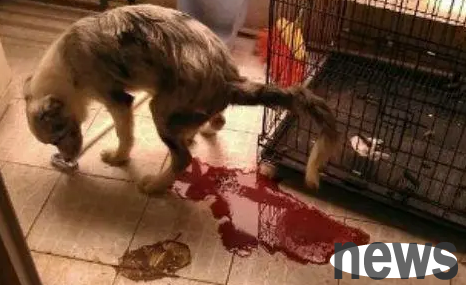Canal parvovirus disease is a strong infectious disease caused by canine parvovirus. Puppies aged 4 to 12 weeks are most susceptible to infection and have the highest incidence in winter. Adult dogs can also be infected, but the symptoms are mild and the disease will not be transmitted to people. The method of infection is digestive tract infection. Food, food utensils, drinking water, and the environment contaminated by the excrement or secretions of the sick dog can all be contagious of viruses.
Clinically, hemorrhagic enteritis or non-suppurative myocarditis is the main feature of diseased dogs. Sometimes its infection rate can be as high as 100%, and its mortality rate is 10%-50%.

1. Causes of canine parvovirus:
1. Canine parvovirus has strong resistance to external factors and can survive for 1 hour at 60℃. The virus is still infectious in an acidic and alkaline environment; viruses on feces and solid pollutants can survive for several months to several years; in a low-temperature environment, its infectivity can be maintained for a long time. 0.5% formalin, 0.5% peracetic acid, 5%~6% sodium hypochlorite, etc. can all be used as disinfectants for the virus.
2. Sick dogs are the main source of infection of this disease. The sick dogs contain the highest toxic content in feces, urine, vomit and saliva. Sick dogs constantly detoxify and infect other healthy dogs. Rehabilitated dog feces are poisonous for medium and long term. Therefore, once the disease occurs in the dog group, it is extremely difficult to completely remove it.
2. Key points of diagnosis of canine parvovirus:
The epidemic of this disease is not obviously seasonal, but it is more common in cold winters. The puppies that have just been weaned mostly have myocarditis syndrome, while the young dogs are mostly enteritis syndrome. At the same time, this disease mainly appears in two clinical forms, namely enteritis type and myocarditis type.
A), enteritis type:

1, incubation period is 7~14 days.
2. Generally, vomiting first and then diarrhea, the feces are yellow or gray-yellow, and contain a lot of mucus and pseudo-film.
3. 2 to 3 days after the disease, the feces are tomato juice, mixed with blood, and have a special fishy smell.
4. The sick dog quickly showed symptoms of dehydration. At this time, the sick dog was depressed and had no appetite. The body temperature rose to above 40 degrees Celsius, and the thirst increased.
5. In the later stage, the body temperature of some sick dogs is lower than normal temperature, and the visual mucosa is pale, the tail and posterior abdomen are often contaminated by feces. In severe cases, the anus is loose and open.
B), Myocarditis type:
Puppies have difficulty breathing, palpitations, pale visual mucosa, physical failure, and often die suddenly. 3. Prevention measures for canine parvovirus
1. The prevention of this disease is vaccination, which is generally a method of co-exempt with infectious diseases such as canine distemper;
2. The course of this disease is fast, and the younger the dog, the higher the mortality rate, and early treatment is very important;
3. The course of myocarditis disease dogs is sharp and deteriorating rapidly, and they often die without time to treat;
4. If the dogs with enteritis disease can be treated in a timely and reasonable manner, the mortality rate can be significantly reduced. Generally, high-immune serum treatment of canine parvovirus is used, and glucose saline is used to rehydrate the disease, ribavirin is used to antiviral, dexamethasone or kanamycin is used to fight secondary infection, and vitamin K is injected into intramuscularly;
4. Reference treatment plan:
1. Immune serum: Early use can improve the efficacy. If there are multiple pet dogs at home, once a dog is diagnosed with this disease, other dogs should be injected with high-free serum or rehabilitation dog serum immediately. The dosage of high-immune serum is 0.5~1 ml/kg body weight, and the rehabilitated dog serum is 0.5~2 ml/kg body weight, and it is used for 3 to 5 days. High-immune serum is used simultaneously with other antibacterial and anti-inflammatory drugs to improve immune effectiveness.
2. Rehydration: Sick dogs often die from dehydration, so rehydration is the main measure to treat this disease. The ingredients and amount of fluids that need to be added should be determined based on the degree of dehydration and systemic condition of the dog. The general intravenous fluids volume is 60 ml/kg body weight. It can be divided into intravenous fluid replenishment, oral fluid replenishment and peritoneal fluid replenishment.
3. Antibacterial and anti-inflammatory: Various broad-spectrum antibiotics can be used, but do not use them for a long time to prevent normal intestinal bacterial flora from being malfunctioned, which will delay the recovery of intestinal digestive function.
4. Antiemetic: In patients with severe vomiting, 0.3-2 ml of Emoer and Medtuling (Wean Fu'an) can be injected into 0.3-2 ml.
5. Anti-shock: For those with obvious shock symptoms, 5-15 mg of dexamethasone can be injected into intramuscularly.
6. Strengthen care: Pay attention to keeping warm to sick dogs. During diarrhea, you should stop feeding high-protein and high-fat feed such as milk, eggs, and meat, and give easy-to-digestive feed to reduce the burden on the gastrointestinal region and improve the cure rate.
5. Suggestions for pet owners:
1. Immunization should be done well. Domestic inactivated canine parvovirus disease vaccines are used in combination with other vaccines. When using the dog's penumbra attenuated vaccine, dogs 30-90 days old should be injected 3 times, and dogs over 90 days old should be injected 2 times, with the interval between each time being 2-4 weeks. Immunization will be strengthened once every six months.
2. After dogs suffer from this disease, they should be isolated in time. The kennel and feeding equipment should be repeatedly disinfected with 2%-4% caustic soda, 1% formalin, 0.5% peracetic acid or 5%-6% sodium hypochlorite.
3. The dead animals should be buried deep or treated harmlessly.
